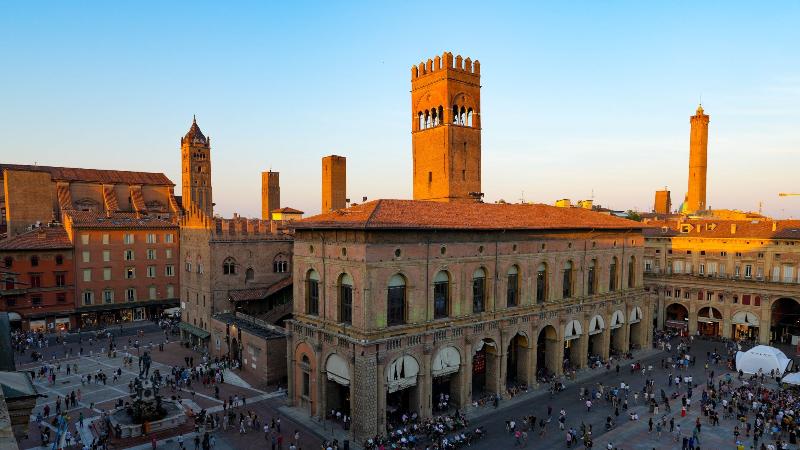
The exchange program taking place in Lazio (Rome), Tuscany (San Casciano in Val di Pesa – Impruneta and Firenzuola, in the province of Florence) and Emilia-Romagna (Montesole and Bologna) offers young history enthusiasts the opportunity to delve deep into the historical events that shaped our modern world, around the main theme of Resistance and diverse war experience (civil war in Rome and the battle around the Gothic line in Tuscany and Emilia-Romagna).
Participants will engage in a variety of creative projects, including video production, podcast creation, and historical storytelling, enabling them to explore and express the human stories behind the conflict.
As the exchange traverses some of the places touched by the “Italian Campaign”, participants will gain invaluable insights into the war’s legacy. This program isn’t just about learning history; it’s about bringing it to life through modern media. As a participant, you’ll work collaboratively with fellow participants, sharing perspectives and improving your skills in storytelling and digital media.
Whether you’re interviewing locals with personal stories to tell, capturing the essence of historical sites on film, or recording narratives and interviewing people for a podcast, you’ll contribute to preserving these vital memories for future generations. Join us in this educational adventure and be a part of a living history that continues to resonate today.
Rome was the first capital to be liberated from Nazi German occupation on 4 June 1944; on the afternoon of that day, after the passage of the vanguards of the U.S. Fifth Army, composed of New Zealand and Italian American troops, General Mark Clark stops at the Rome-Fiuggi railroad station near Centocelle. Here he has his portrait taken in front of the road signs indicating the beginning of the city.
During the morning starting from the Centocelle railroad station, a symbolic place where a Vector of Memory of Liberation Route Europe has been placed, the participants will have a tour in the Casilina, Quadraro, as well as Centocelle districts and will have the possibility to discover a less know part of the eternal city and the role played by the civilians and the Resistance movement in the Liberation of the city. They will have the possibility to interview stakeholders and experts.
In the afternoon they will visit the Ardeatine Caves Memorial, a monumental complex dedicated to the memory of the massacre of 335 civilians on the 24th of March 1944, made by the German forces.
There will be the possibility to have a guided tour of the Memorial, to record podcasts and videos and to have access to some documents, articles and images of the massacre and the war of Liberation in Rome.

On day two, during the morning, a walk in the city centre of Rome discovering the most iconic places related to the Fascist regime and WWII such as: the Rome Commonwealth War Cemetery (that was built after the entry of the Allied force into Rome in June 1944 and holds 426 graves); St. Paul’s Gate (the symbolic place of the first Roman Resistance and, in general, of the voluntary opposition of Italians to the German invasion); the Jewish Ghetto (with many testimonies of nazi-fascist persecution and of the biggest round-up of the Jews in the history of Italy on October, 16 1943); Palazzo Venezia (the headquarters of the Fascist government. From its balcony, Mussolini used to harangue the crowds on the most important occasions) and the Altar of the Fatherland (one of the key tools of the regime’s propaganda).
With the help of historians and expert’s participants will reflect and discuss on how was living in Rome during the occupation period. What was the role of the partisans and the civilians. How was the population affected by the bombing. What was the role of the Jewish community in Rome and the effects of the racial laws on the latter.
In the afternoon a visit of the Museum of the Liberation in Via Tasso, Rome is planned. The museum is a symbolic place of the Nazi occupation of the Italian capital. The museum occupies an entire building which was used as a prison by the Sicherheitspolizei, the Nazi Security Police under the command of Herbert Kappler.
Participants will have time to conduct their own research, explore the museum, record podcasts and videos and to interview stakeholders, guides and experts.

On day three, the exchange will move to Tuscany, where the Florence American Cemetery and the German Military Cemetery of the Futa Pass will be visited.
The Florence American Cemetery in Impruneta (FI) commemorates the 4.392 American soldiers that died, mostly, fighting for the Liberation of Rome in June 1944. Among the buried soldiers are also those who died fighting in the Apennines Mountains shortly before the end of the war. The German Military Cemetery of the Futa Pass in Firenzuola (FI) is the largest created in Italy by the German Volksbund Deutsche Kriegsgräberfürsorge organisation. It stands at an altitude of 950 metres, right on the Gothic Line and houses the graves of over 30,000 German soldiers, who fell in Northen Italy.
These two places of remembrance serve as a poignant reminder of the war’s human cost and fosters reflection on reconciliation and peace. During a guided tours there will be more than enough room to ask questions and to interact with experts. During the visit, podcasts and videos will be created, all trying to create an impression of the scale of loss and the importance of remembering all who perished.
After the visits, the participants will move to Emilia-Romagna for the overnight.

On day four, the participants will visit the Monte Sole Historical Park, involving the municipalities of Marzabotto, Monzuno and Grizzana Morandi, in the province of Bologna.
From 29 September to 1 October 1944, German soldiers killed 771 people during the round-up organised by SS against the partisan brigade itself, most of them civilians, 216 of them children. It was the most important German massacre committed in Western Europe. The Park nowadays is a protected area with the main objective of spreading a culture of peace.
The participant will have the possibility to visit the Memorial and Documentation Centre in Marzabotto and the “Spazio Stella Rossa” in Vado where they will have time to conduct their own research and to interview stakeholders and experts.
During the visit podcasts and videos will be also created, on the importance of keeping alive the memory of this dramatic event, the destruction caused, the role of the Partisan Brigade. They will also have the possibility to reflect, thanks to the help of experts and facilitators, on the importance of remembrance and on the similarity with the present days and wars.

On day five, the participants will gather in Bologna, in a plenary session with historians and facilitators, that will be focused on the Italian Campaign and on the battles and roundups of autumn 1944 fought and suffered by the partisans of Bologna in preparation for the liberation of the city, a liberation that did not occur, however, until April 1945.
The participants will share impressions and will debate on what they have seen during the stay in Italy and what are the lesson learnt on the field and will have time to record podcasts and videos and to interview stakeholders, guides and experts.

Sign up and join one of the exchange trips across Europe to keep the history of the Second World War alive!
© LRE Foundation - 2025